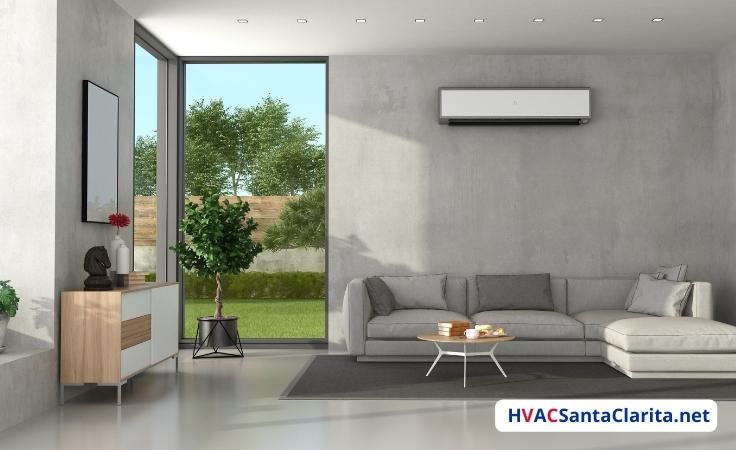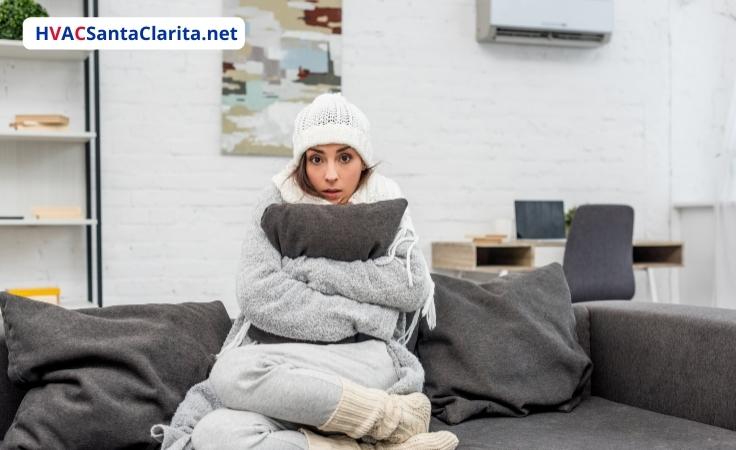Are you wondering what the best temperature for a living room is? To maintain a comfortable house temperature, you will need a properly functioning air conditioner; if not, you should determine whether to call for AC repair or replacement.

It is no secret that some people prefer their living room temperature to be very warm or while others would rather it be cold.

call 661-888-0248
Contact us 24/7 for HVAC services!
In any family, it is typical to have thermostat fights, especially in common places such as the living room. Some family members would want it hot, while others would prefer a room temperature that is cold.
However, could there be an ideal room temperature for the living room that accommodates the comfort of all family members?
In this post, we look at the optimal room temperature for your living room. We also evaluate what might occur if your living room is too cold or too hot.
And most importantly, we help you master how to achieve and keep your living room temperature within the recommended range.
Keep reading ahead to find out more!
The Ideal Living Room Temperature
The ideal room temperature for your living space should range between 64°F and 75°F. It is a huge range just to cater to different needs.

Not only does this range provide acute comfort, but it also provides long-lasting immunity against most respiratory and cardiovascular disorders.
You can switch around this range depending on your age and the season.
- A healthy adult can tolerate temperatures ranging from 73 to 75 degrees Fahrenheit.
- In the winter, one may deviate toward the lower threshold. They could maintain an ideal temperature of 64 to 68°F.
More insight is essential to tailor your living room temperature to specific individual requirements. The initial step toward comfort is understanding the factors that influence preferred temperature and ways to counteract them effectively.
The Best Temperature for Living Room: Temperature Influencing Factors
Sometimes, we forget about the specific requirements of each family member in our eagerness to establish an ambient temperature. Although the ideal temperature gradient is 64 to 75 degrees Fahrenheit, experts recommend evaluating all factors involved before deciding.
You and your guests can only be comfortable if you consider these factors.
Health and Age Group
Various age groups within a household have distinct demands regarding the ideal room temperature. For infants, young children, seniors and those with a history of cardiovascular or respiratory disease, the perfect living temperature range is always above 64 degrees Fahrenheit.

The ideal temperature range above is suitable for an ordinary person with no relevant medical history. We should keep infants at slightly warmer (and ambient) temperatures than adults.
Individual Preferences
People of the same age and medical history might have varied preferences for the ideal house temperature. Many would argue that the criterion in this situation is the human body temperature. However, several variables affect the optimal room temperature preference, including:
- different body types,
- Shapes and levels of body fat,
- metabolic rates.
Therefore, consider how other people react before deciding on your preferred temperature.
House Design
Consider a typical two-story house with a single thermostat. It will most likely be warmer if your living room is on the top floor. Conversely, if your living room is far from the central thermostat, you will notice cooler temperatures.

Insulation is another aspect that affects the ideal room temperature. If your house has poor insulation, you will waste more energy while trying to regulate the living room temperature. It’s easy to notice poor insulation because some living rooms can be either too cold or too warm. However, seek expert advice before making any modifications.
If there is a vast difference between your thermostat and the living room, you may want to consider split AC units just for the living room.
Outdoor Accessibility From Your Indoor Space
The proximity of the living room and outdoor spaces also contributes to maintaining a comfortable temperature. Therefore, the location, number, and size of the windows in your living room are crucial to achieving the recommended room temperature. Rooms with many expansive windows receive more sunlight.
More solar exposure means the living room temperature will naturally rise. However, your living room can receive more cold air at night if your windows don’t seal properly.
Techniques of Temperature Control in Your Living Room
A central heating system is an excellent addition to any home. The system, which comprises air conditioners, thermostats, radiators, and ventilation, is an active way of meeting your demands. However, if you’re not careful regarding passive modes, their efforts might go down the drain.

Here’s how to ensure that your living room can access adequate passive ventilation:
- Place fresh-air and exhaust vents in strategic locations around your home. You should install these vents in areas where activity may occur, such as living rooms, bedrooms, and study rooms.
- Install static roof louvers in locations directly exposed to the sunlight.
- In the winter, you may block the vent to keep the heat inside the house. It reduces excessive heat during the summer by allowing heat to escape through the ceiling’s thermal bypasses.
- Living rooms with cross-ventilation are preferable, although single-sided ventilation should be sufficient. Not only do they offer fresher breathing space, but they also decrease the HVAC system’s cost.
How Cold is “Too Cold” for a Living Room?
What about non-optimal temperatures, given all the talk about ideal temperatures? Regardless of how low the outdoor temperature drops, the World Health Organization (WHO) recommends that a home’s indoor temperature not fall below 64 degrees Fahrenheit (18 degrees Celsius).

The young and the old cannot endure this range. We recommend keeping the temperature at 70 degrees Fahrenheit to ensure greater comfort and safety.
When it is winter, your heater should protect you from these cold conditions. Prepare your heater to warm your house before the onset of summer. Look for heater repair near me to ensure your heater is ready to get the job done.
What Indoor Temperature Range is Unhealthy?
Anything outside the recommended range may be harmful, depending on a person’s sensitivity. Some people could endure a minor temperature change, but the moment your environment veers towards the extremes, you risk illness. The worst interior air temperature is anything above 86 degrees Fahrenheit (30 degrees Celsius) (1).
Your HVAC system should always be in excellent condition, especially when temperatures reach extremes. HVAC Santa Clarita’s AC maintenance plan will ensure your AC unit is always in great working condition.
What Room Temperature Is Most Comfortable?
After considerable debate on the variables that affect each person’s preferred temperature, a mutually agreeable solution is required. What temperature is exactly comfortable for everyone? Any temperature between 68 and 70 degrees Fahrenheit qualifies.
However, the response to this query is arbitrary.
While some enjoy cooler ranges, others prefer warmer ones. You may set your living room temperature restrictions between 66 and 71 degrees Fahrenheit to offer visitors or family members a bit more latitude.
Before setting a temperature, consider who will be living with you.
Frequently Asked Questions
What is a Comfortable Temperature for a house?
According to the World Health Organization (WHO), the optimal indoor temperature for healthy, well-groomed individuals is 64 degrees Fahrenheit. The WHO also concurs that this temperature is ideal for sleeping. However, it is good practice to heat your house according to the age and health of your members.
Why is AC taking longer to cool the house?
Some of the reasons your HVAC system is taking a long time to achieve the desired temperatures include:
- Dirty air filters,
- Poorly maintained systems,
- HVAC duct leaks.
If you have duct leaks, you will need sealing services or air duct replacement services. This will ensure the cooled air reaches all the places it is required.
Is 80 Degrees Fahrenheit Too Hot for a Room?
Summer room temperature should be 77-80 degrees Fahrenheit, with 78-79 being the most comfortable. However, the highest room temperature must not exceed 80 degrees Fahrenheit.
Is 62 Degrees Fahrenheit Too Cold for a House?
A temperature of around 62.6°F is acceptable as the best AC temperature for sleeping, but the living room temperature should be at least 64.4-66.2°F and 69.8°F if you have young children or the elderly.
Final Thoughts
The ideal temperature is a complex subject because several aspects must be considered. However, carefully examining other factors can help you agree that it’s acceptable to everyone. Since some people prefer warm conditions while others prefer cooler conditions, you need to adjust your thermostat to achieve a perfect balance for everyone.

call 661-888-0248
Contact us 24/7 for HVAC services!
sources
https://indianexpress.com/article/explained/coronavirus-air-conditioner-temperature-guidelines-humidity-6378739/
